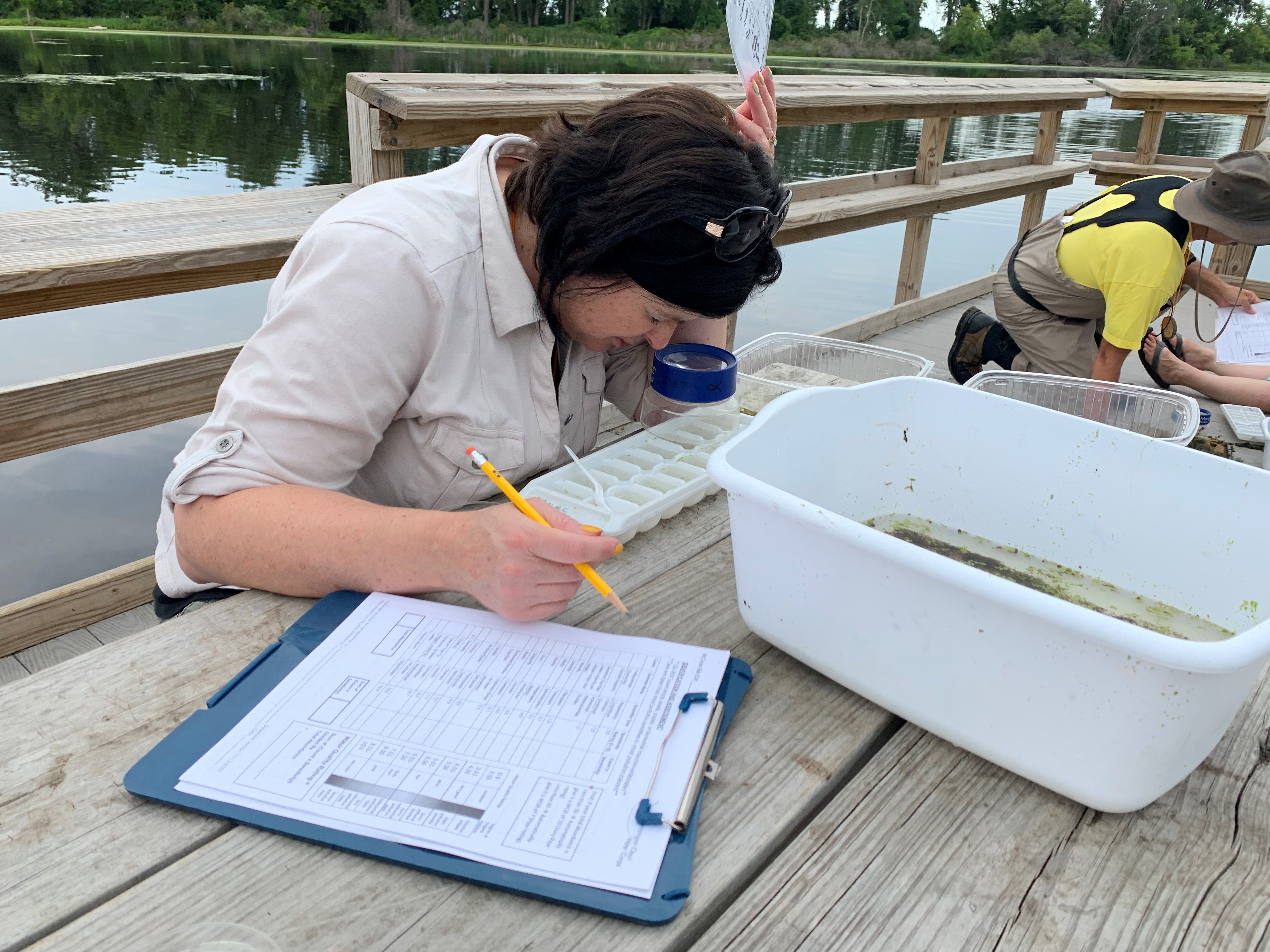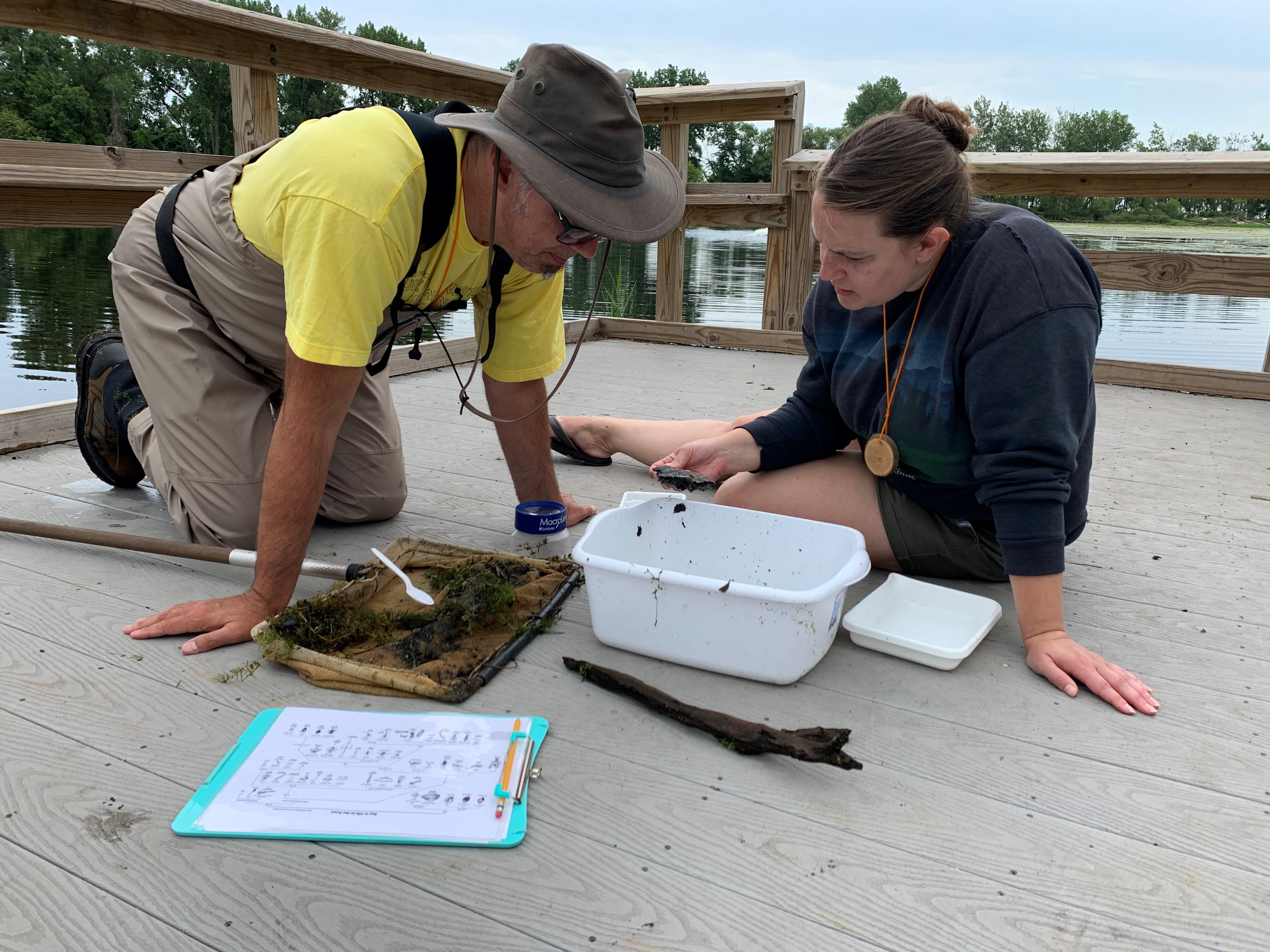Exploring Great Lakes literacy and watershed stewardship
The Lake Huron Place-Based Stewardship Education Summer Teacher Institute continues to change and grow to meet the needs of Michigan teachers.

A Great Lakes literate person is someone who understands, appreciates, shares about and helps to protect the Great Lakes resources and the watersheds that feed them. Inspiring and encouraging teachers to help their students become Great Lakes literate is what the Lake Huron Place-Based Stewardship Education Summer Teacher Institute aims to do.
The institute annually supports teachers planning to engage youth in place-based stewardship education (PBSE). Nearly 20 educators have completed this course in 2021.

Just as the pandemic has caused educators in the classroom to pivot by providing online learning opportunities, the Summer Institute has had to change its format. Typically, it is offered as an in-person, three-day experience and in 2020 was completely virtual. In 2021, recognizing the need for both hands-on learning experiences and easy application of content, the Lake Huron PBSE Summer Institute changed again – to a hybrid format including one day of in-person field work along with six virtual content sections, which were held asynchronously (i.e., not as live sessions but instead self-paced learning). This Google site allows exploration of some of the same content and learning accomplished by participants this year.
The 2021 Lake Huron PBSE Summer Institute was co-led and funded collaboratively by the Northeast Michigan Great Lakes Stewardship Initiative (NEMIGLSI) network and its leadership partners, Central Michigan University H2O Q, water quality monitoring program, Northeast Michigan MiSTEM network, MSU Extension and Michigan Sea Grant.
The regional Sea Grant-led Center for Great Lakes Literacy, with funding from the Great Lakes Restoration Initiative, also supported this professional learning opportunity. Serving as Michigan’s shore side investment in Great Lakes Literacy, CGLL provided participant stipends to help educators implement hands-on, stewardship projects in the upcoming school year.

The 2021 virtual Summer Institute consisted of three core areas of content and learning:
- Place-based stewardship education (PBSE) process and pedagogy
- Great Lakes Literacy Principles
- Water quality exploration and monitoring
The following three sections focused on developing a successful PBSE project by:
- Exploring and identifying community issues, needs or opportunities.
- Building community relationships to address local issues with their community.
- Meeting Michigan’s education expectations.
During the field visits, teachers explored how water quality monitoring can help protect and preserve the Great Lakes watershed. Then, they got their feet wet by examining both living and non-living water quality indicators at their respective field sites. The in-person field visits took place at two locations in the Lake Huron Watershed (Herman Vogler Conservation Area in Presque Isle County and Bay City State Park in Bay County). These field visits also served as an opportunity to build relationships with community partners.

Over the course of the institute, participants developed their class PBSE project plan, exploring how to launch and implement a successful effort while adjusting for the challenge of implementing during a pandemic. Each educator received a $500 project stipend, water quality monitoring equipment, posters and more to support their PBSE efforts. Looking forward to the 2021-22 school year, these educators hope to engage more than 1,500 youth in hands-on, place-based projects.
While the 2021 institute was not in the same format as our traditional Summer Institute, participants and facilitators learned together, shared experiences, made plans to empower youth to change their communities through PBSE, and most importantly, had fun!
If you would like to receive updates about future Great Lakes Literacy educational opportunities in Michigan, please sign up for this newsletter. If you would like updates about regional opportunities in northeast Michigan (lower peninsula), please join the Northeast Michigan Great Lakes Stewardship Initiative by creating a free account here.
Michigan Sea Grant helps to foster economic growth and protect Michigan’s coastal, Great Lakes resources through education, research and outreach. A collaborative effort of the University of Michigan and Michigan State University and its MSU Extension, Michigan Sea Grant is part of the NOAA-National Sea Grant network of 34 university-based programs.
This article was prepared in part by Michigan Sea Grant educators under award NA180AR4170102 from the National Oceanic and Atmospheric Administration, U.S. Department of Commerce through the Regents of the University of Michigan. The statement, findings, conclusions, and recommendations are those of the author(s) and do not necessarily reflect the views of the National Oceanic and Atmospheric Administration, the Department of Commerce, or the Regents of the University of Michigan.



 Print
Print Email
Email




